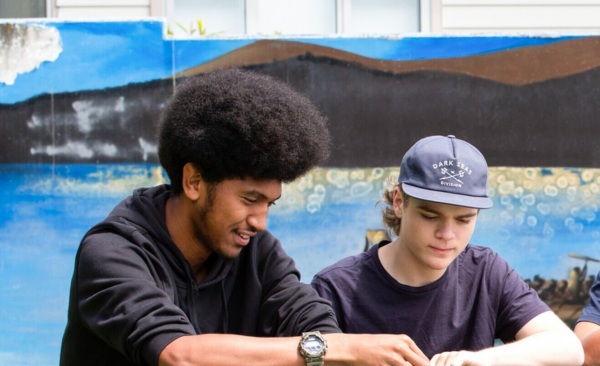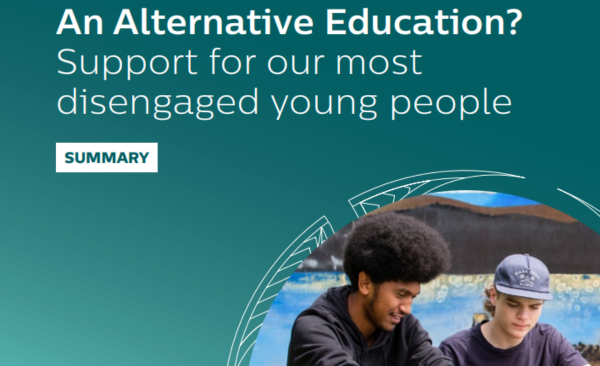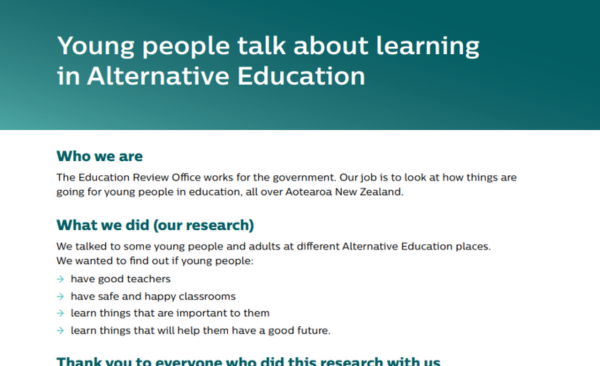The education young people receive at Alternative Education has the power to reconnect them to their learning and change their lives. ERO talked to young people, educators, providers, and schools to find out how well Alternative Education is going. We found there is a lot that needs to improve in in Alternative Education, to help young people achieve good outcomes. Young people in Alternative Education often want to learn, and the work that educators and providers do is critical to their life outcomes.
This guide is for educators and providers that work with young people in Alternative Education. It is about ERO’s new report: ‘An Alternative Education? Support for our most disengaged young people’. It shares:
- what we heard from the young people, educators, and providers we talked to
- what we found out about what good provision looks like
- ‘big picture’ findings about how well everyone is working together to help these young people learn, and where improvements could be made
- the changes to provision that we are recommending.
We appreciate the work of all those who supported this evaluation, particularly the young people and their whānau, educators, and leaders who shared with us. Their experiences and insights are at the heart of what we have learnt.
What young people told us
Young people told us the things that work well at Alternative Education are:
- having small classes
- having the same educator throughout the day
- having educators that know them and care for them
Young people are positive about their learning and they told us that the relationships that teaching staff develop with them are positive and nurturing. They attend more often and feel more engaged in their learning at Alternative Education, and educators are helping them work toward their goals.
“Here it’s small, I can actually ask for help and interact with all the tutors” - Young person enrolled at Alternative Education
What educators told us
All educators we talked to were passionate about helping young people, but they also told us it’s hard. Educators identified what would help them to achieve better outcomes for learners:
- better collaboration and communication across the system, including their previous educational experiences
- access to professional learning and development opportunities, including how to teach students who have experienced trauma, and support learners with literacy and numeracy
- access to teaching resources that are interesting and engaging and at the appropriate level
- improved funding to be able to provide the supports these young people need.
“Ākonga (students) feel safe there, it is their tūrangawaewae (place to stand)” - Alternative Education Counsellor
What we saw at Alternative Education Providers:
- You are passionate about improving outcomes for young people.
- Funding constraints mean you are struggling to improve these outcomes. Alternatie Education does not always have adequate facilities or quality teaching resources.
- You do not have access to support to help these young people.
- You can build a relationship with young people but you are not always strong teachers.
- There are high levels of provider and staff turnover.
- You are isolated from other providers and schools so they lack access to broader education and resources.
Outcomes in Alternative Education
Young people have positive experiences at Alternative Education, but their outcomes after Alternative Education are not good. By age 20, 70 percent are on a benefit, and only one in 10 get NCEA Level 2.
What did ERO find out in our evaluation?
We visited 11 contract-holding schools and their Alternative Education sites across Aotearoa New Zealand and saw considerable variability in provision. We found:
- Young people in Alternative Education are the most highly disengaged from education.
- Young people in Alternative Education are disproportionately Māori and male. Though providers reported the number of females has increased recently.
- Young people are referred to Alternative Education due to behaviour. Over a quarter have been suspended or excluded. They are also referred due to attendance issues, alienation from school. Sometimes they are referred by Youth Justice or Oranga Tamariki.
- These young people’s needs have not been identified and met early enough. They also have significant gaps in their learning, which have not been addressed. Waiting for a place at Alternative Education deepens the disengagement. This indicates that our education system is not currently set up with sufficient or the right range of provision to meet the needs of these young people.
- While in Alternative Education these young people attend more, enjoy learning more, and feel safer. They have a stronger sense of belonging and improved behaviour.
- When they move out of Alternative Education only around one in four return to school. More than half do not go on to further training or employment. By age 20, almost 70 percent are receiving a benefit.
- Alternative Education does not provide good outcomes. These young people have significantly worse outcomes than other young people, worse even than very similarly disengaged young people with high needs. They are unlikely to achieve an education qualification. As adults, they are much more likely to be receiving benefits and be involved in the criminal justice system.
- The current model of Alternative Education is inadequate to meet the level of need of these often highly disengaged young people, leading to worse outcomes than for other young people.
- Teaching is weak and teaching resources are inadequate.
- Facilities are often so run down they act as a barrier to learning.
- Funding is inadequate.
- Funding limitations make it non-viable for many providers and providers and staff turnover is high.
- Providers are often isolated from other providers and schools, so they often lack access to broader education resources (e.g., careers advice, specialist subjects, sports) and professional teaching support.
- Providers cannot access the broader wrap-around support young people need.
- Accountability for delivery and outcomes is weak.
- When young people (exceptionally) do succeed at Alternative Education it is due to the elements of the model that do work:
- small class sizes
- having the same educator throughout the day
- the flexibility to provide a different education on a site separate from school
- having staff with experience, aptitude, and commitment to working with these young people, who act as positive role models.
- Alternative Education is potentially a missed opportunity to change these young people’s life trajectories. They are often engaged and attending but the current model of provision is failing to provide them with a quality education and may be contributing to poorer outcomes. The long term costs for the young person, their family, and broader society, are very significant.
Five actions to make change
Area 1: Better identify and meet the needs of these young people before they become disengaged, and increase the number who are able to stay and succeed in mainstream schooling.
- providing guidance on how to effectively identify young people most at risk of disengagement
- supporting schools to act early to help young people stay in school
- sharing with schools best practice in managing challenging behaviours.
Area 2: Make sure there are a range of effective options (of different type, intensity, and duration) available for those young people who are not thriving in the school setting, and that there are clear, consistent, and rigorous gateways so that young people are matched to provision that best meets their needs.
- examining the range of options available for those young people who are not thriving in the school setting
- developing guidance around accessibility of options, good transitions, and the role of agencies for each option.
Area 3: As part of this set of options, reform the ‘Alternative Education’ model of provision so that there is a new model that is designed to meet both the education and broader needs of the most disengaged young people who need an alternative to mainstream schooling.
- developing a clear national model and set of standards for high quality ‘Alternative Education’ provision , including better funding, requiring registered and quality teachers, and better access to recourses to support learning
- ensuring all current and future 'Alternative Education’ provision has suitable premises and facilities
- supporting teachers in ‘Alternative Education’ with a lead of professional practice, curriculum resources tailored for young people in ‘Alternative Education’, and facilitated professional networks
- agencies work together to ensure young people in ‘Alternative Education’ are a priority for the specialist support they need.
Area 4: Put in place the support needed for successful pathways and transitions from ‘Alternative Education’ into further education, training, or employment.
- agencies review the transition and ongoing support for young people in ‘Alternative Education’.
Area 5: Strengthen accountability and monitor how well provision is meeting the needs of young people who are in ‘Alternative Education’.
- actively monitoring the quality of provision in ‘Alternative Education’
- reporting annually on the education experiences and outcomes for young people in ‘Alternative Education’, including wait times
- ensuring ‘Alternative Education’ providers and contract-holding schools collect and report reliable data on young people’s enrolment, education outcomes and destinations.
For more ideas, check out Part 3 of the main report, which sets out good practice.




